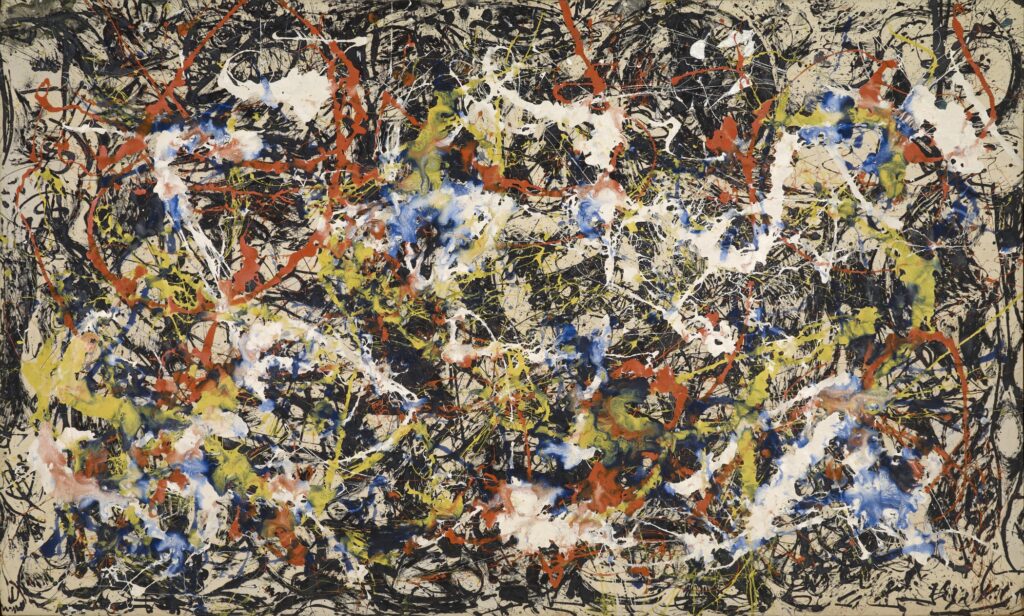Abstract art and Expressionism stand out as two influential art movements that reshaped the landscape of 20th-century painting. These movements pushed boundaries, exploring new ways to express inner emotions and artistic visions, far removed from traditional representations.
Abstract Art
Abstract art departs from the need to replicate reality and instead focuses on the use of shapes, colors, and forms to convey emotion. One of the early trailblazers in this movement was Wassily Kandinsky, who believed that painting should tap into the emotional and spiritual life of the artist, not merely the physical world. Kandinsky’s use of colors and forms was intended to express emotions in a direct and unfiltered manner, allowing the viewer to connect with the artist’s inner world.
Abstract art branched into several directions:
- Geometric Abstraction: Artists like Piet Mondrian embraced minimalism, reducing art to basic elements like vertical and horizontal lines. Mondrian’s use of primary colors aimed to create visual harmony and balance, reflecting the pursuit of universal order.
- Lyrical Abstraction: Unlike the precise geometry of Mondrian, this style was more spontaneous and free-flowing. Artists in this genre emphasized emotional expression through loose, organic forms. The goal was to let the art be driven by intuition and raw emotion, rather than calculated design.
Expressionism
Expressionism is a movement deeply rooted in expressing intense personal emotions. Emerging in early 20th-century Germany, this movement became a response to the societal upheavals and psychological crises that followed World War I. Rather than focusing on realistic depictions, Expressionism was about conveying the artist’s subjective experience, often highlighting darker emotional states.
Artists like Edvard Munch and Egon Schiele used distorted figures and exaggerated colors to depict intense emotions such as anxiety, fear, and despair. Their works often revealed the inner turmoil of the human psyche, capturing alienation and suffering with unsettling imagery.
Abstract Expressionism
In the years following World War II, Abstract Expressionism emerged in America, combining the emotional intensity of Expressionism with the non-representational focus of abstract art. It became the first American art movement to gain global prominence, shifting the center of the art world from Paris to New York.
Key figures such as Jackson Pollock and Mark Rothko explored deep psychological themes through innovative techniques:
- Pollock’s “Action Painting”: Pollock developed an energetic style, where he dripped and poured paint onto large canvases placed on the ground. His dynamic gestures and movements became part of the artwork, reflecting the physical process of creation.
- Rothko’s Color Fields: Rothko, on the other hand, focused on vast expanses of color, creating soft-edged rectangles that seemed to radiate emotion. His works were meditative, encouraging viewers to experience deep emotional and spiritual reflection through their simplicity.
Both of these approaches marked a departure from traditional forms of representation, allowing artists to explore deeper, more personal truths.
Influence and Legacy
Both Abstract Art and Expressionism have left an indelible mark on the world of contemporary art. Abstract Expressionism, in particular, paved the way for movements like Minimalism and Conceptual Art, influencing how artists approached emotional depth and artistic process. These movements were instrumental in shifting the focus of art from representing reality to invoking emotional and psychological responses in the viewer.
Their legacy continues to inspire modern artists who seek to break free from convention, offering new ways to engage with the deeper layers of human experience through art.

